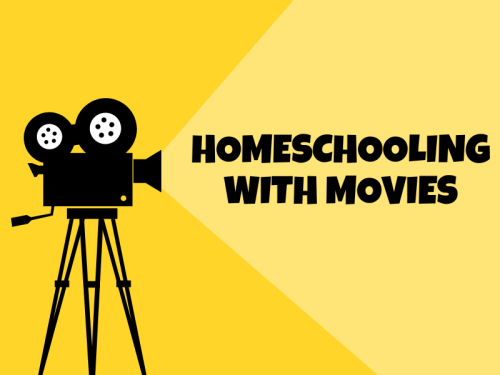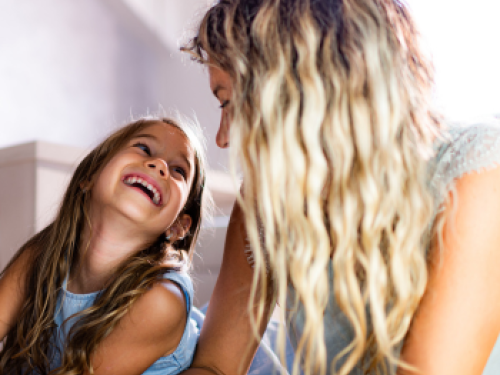by Sarah Major, M.Ed
Recent years have brought an increased emphasis on teaching school content to younger and younger children. While this is not the primary work of toddlers, there are wonderful developmentally-appropriate ways to introduce letters, sounds, and numbers to toddlers. The really young learn most readily through pictures, stories, music, games, and a whole lot of hands-on play.
I believe that the most successful learning takes place when an environment is prepared with such careful thought that when a child enters that environment, he automatically begins to absorb concepts without anyone instructing him and without even realizing that he’s learning. This kind of learning environment is perfect for any child but most of all for the very young.
Some specific elements work well to create a natural learning experience for little tots, a learning experience that is not only effective but is fun and easy for you as the teacher!
Song. If you want your little tot to learn a specific procedure (very important), put it to music. When I was little we used to sing “This is the way we wash our hands, wash our hands, wash our hands. This is the way we wash our hands so early in the morning.” You can replace “wash our hands” with whatever you are teaching at the moment. If you encourage the child to mimic what you are doing while you sing, you will be modeling for her how you do the particular job, and she will be practicing the skill as you sing.
Visuals. We’ve all heard that a picture is worth 1,000 words and wow is that true! A visual can convey so much in the time it takes a child to take a look. Pictures and images make use of visual memory where the picture and all its details are stored intact. Memorable images often can be recalled many years later in minute detail, carrying with them any learning concepts that were embedded in them. Combine a visual with song or story and you have a doubly effective teaching method.
Story. Stories can be considered childhood’s language. Children are natural storytellers, they think of their lives in terms of story. The story line or plot is the glue that holds all the elements of the story together. If you want your little one to remember a sequence of events or steps in a procedure, make up a story that links all the pieces together. Combine a story sequence with images to make an even more effective learning experience.
Touch. Very young children learn about the world through their senses—sight, smell, touch, sound, and taste. They pick up cues about natural characteristics of objects in their world; they learn about things that are soft or hard, heavy or light, smooth or rough, hot or cold, sweet or sour, and so forth. They learn about shape, what happens when you drop something, what “round” means and how round objects behave. They learn so much that becomes background for formal learning later in life. The richer the sensory background, the broader the store of prior knowledge and understanding the child will bring to school.
Sarah Major, CEO of Child1st Publications, grew up on the mission field with her four siblings, all of whom her mother homeschooled. As an adult, Sarah homeschooled a small group of children in collaboration with their parents, and has taught from preschool age to adult. Sarah has been the Title 1 director and program developer for grades K-7, an ESOL teacher, and a classroom teacher. As an undergraduate student, Sarah attended Wheaton College in Wheaton, Ill. and then received her M.Ed. from Aquinas College in Grand Rapids, MI. In 2006 Sarah resigned from fulltime teaching in order to devote more time to Child1st, publisher of the best-selling SnapWords™ stylized sight word cards. In her spare time Sarah enjoys gardening, cooking, pottery, quilting, and spending time with her family.
Child1st Publications, LLC
www.child-1st.com
704-879-4047
3302 S New Hope Rd
Suite 300B
Gastonia, NC 28056
Recent years have brought an increased emphasis on teaching school content to younger and younger children. While this is not the primary work of toddlers, there are wonderful developmentally-appropriate ways to introduce letters, sounds, and numbers to toddlers. The really young learn most readily through pictures, stories, music, games, and a whole lot of hands-on play.
I believe that the most successful learning takes place when an environment is prepared with such careful thought that when a child enters that environment, he automatically begins to absorb concepts without anyone instructing him and without even realizing that he’s learning. This kind of learning environment is perfect for any child but most of all for the very young.
Some specific elements work well to create a natural learning experience for little tots, a learning experience that is not only effective but is fun and easy for you as the teacher!
Song. If you want your little tot to learn a specific procedure (very important), put it to music. When I was little we used to sing “This is the way we wash our hands, wash our hands, wash our hands. This is the way we wash our hands so early in the morning.” You can replace “wash our hands” with whatever you are teaching at the moment. If you encourage the child to mimic what you are doing while you sing, you will be modeling for her how you do the particular job, and she will be practicing the skill as you sing.
Visuals. We’ve all heard that a picture is worth 1,000 words and wow is that true! A visual can convey so much in the time it takes a child to take a look. Pictures and images make use of visual memory where the picture and all its details are stored intact. Memorable images often can be recalled many years later in minute detail, carrying with them any learning concepts that were embedded in them. Combine a visual with song or story and you have a doubly effective teaching method.
Story. Stories can be considered childhood’s language. Children are natural storytellers, they think of their lives in terms of story. The story line or plot is the glue that holds all the elements of the story together. If you want your little one to remember a sequence of events or steps in a procedure, make up a story that links all the pieces together. Combine a story sequence with images to make an even more effective learning experience.
Touch. Very young children learn about the world through their senses—sight, smell, touch, sound, and taste. They pick up cues about natural characteristics of objects in their world; they learn about things that are soft or hard, heavy or light, smooth or rough, hot or cold, sweet or sour, and so forth. They learn about shape, what happens when you drop something, what “round” means and how round objects behave. They learn so much that becomes background for formal learning later in life. The richer the sensory background, the broader the store of prior knowledge and understanding the child will bring to school.
Sarah Major, CEO of Child1st Publications, grew up on the mission field with her four siblings, all of whom her mother homeschooled. As an adult, Sarah homeschooled a small group of children in collaboration with their parents, and has taught from preschool age to adult. Sarah has been the Title 1 director and program developer for grades K-7, an ESOL teacher, and a classroom teacher. As an undergraduate student, Sarah attended Wheaton College in Wheaton, Ill. and then received her M.Ed. from Aquinas College in Grand Rapids, MI. In 2006 Sarah resigned from fulltime teaching in order to devote more time to Child1st, publisher of the best-selling SnapWords™ stylized sight word cards. In her spare time Sarah enjoys gardening, cooking, pottery, quilting, and spending time with her family.
Child1st Publications, LLC
www.child-1st.com
704-879-4047
3302 S New Hope Rd
Suite 300B
Gastonia, NC 28056





